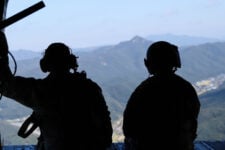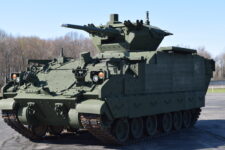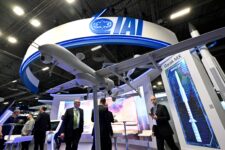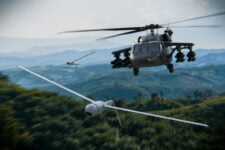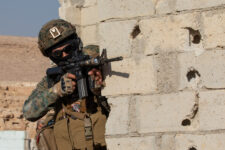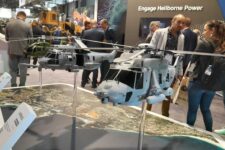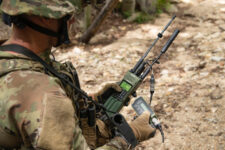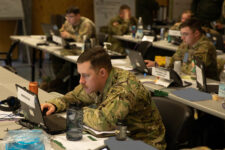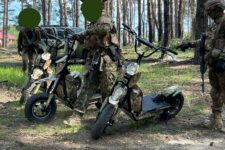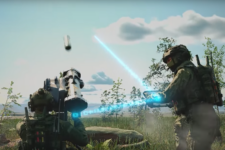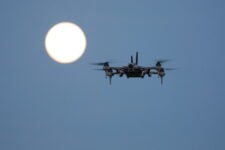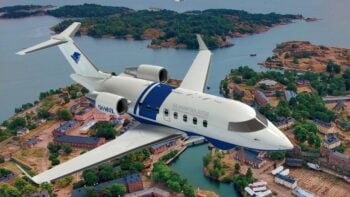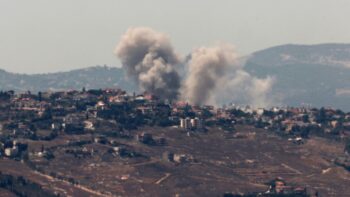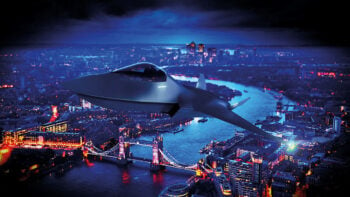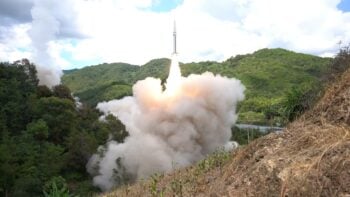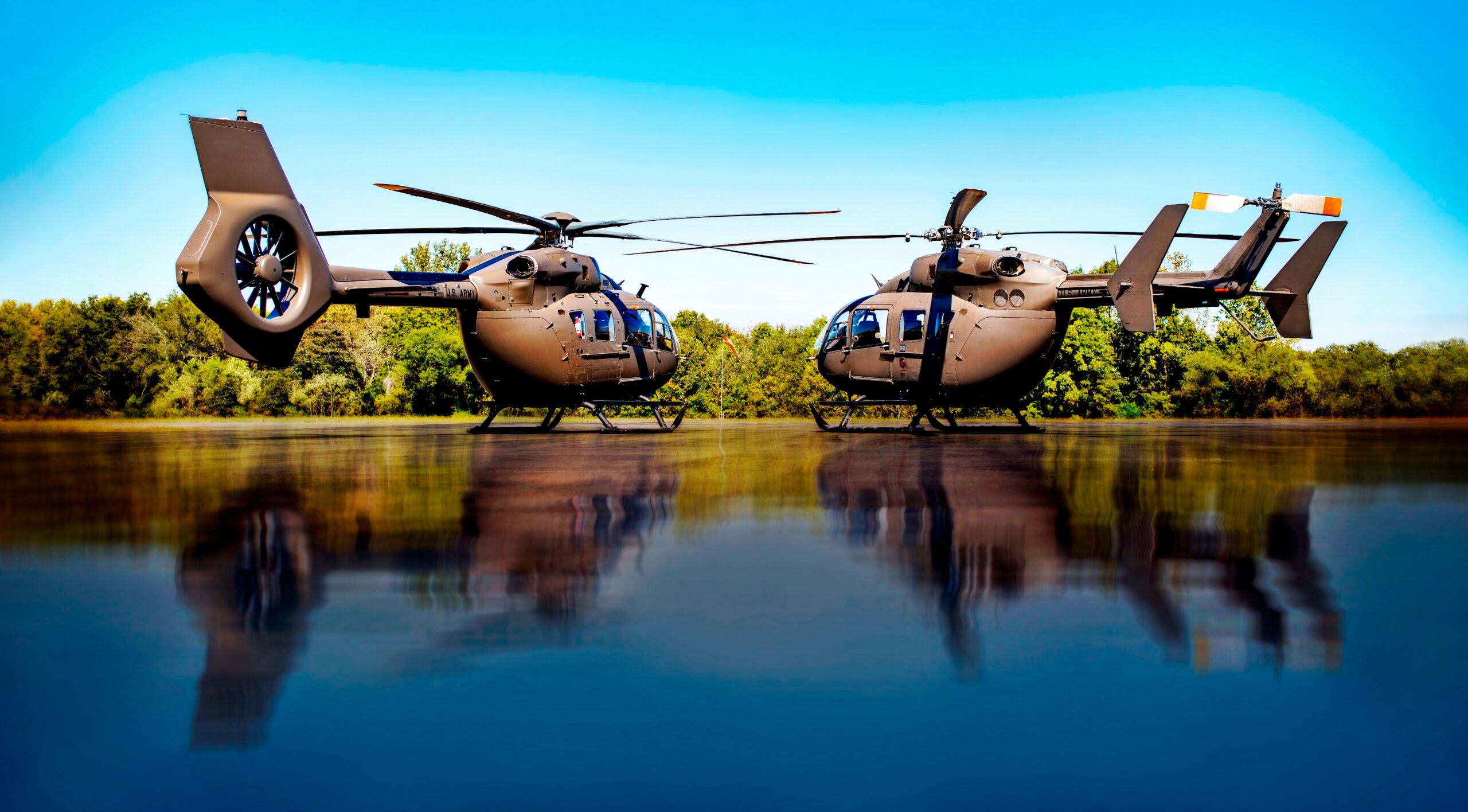
The UH-72A and U-72B represents the Army’s third largest fleet and performs a range of missions in different conditions and environments. Photo courtesy of Airbus.
In this Q&A with Airbus U.S. Space & Defense, we talk with Michael Arrington, program manager for the Lakota helicopter, flown by both the U.S. Army and National Guard, and Craig Dupuy, senior manager for National Guard Business Development, about how Airbus employs capabilities developed on the commercial side to improve mission availability of the Lakota, the support structure keeping the aircraft operational, and lessons learned from the UH-72A and commercial sector that contribute to the new UH-72B’s success.
Breaking Defense: Tell us about Airbus support of the Lakota fleet and what that means for readiness?

Michael Arrington, program manager for the Lakota helicopter, Airbus.
Arrington: Airbus is the world leader in helicopter production with about 54 percent of the market. We understand fleet sustainment and bring decades of aerospace experience to supporting the US Army’s missions. Leveraging capabilities and lessons learned from our commercial helicopter success, we developed an effective Contractor Logistics Support program to support the enduring fleet. Parts support is the backbone of the CLS contract, and it’s important to remember that the CLS accounts for sustaining, engineering, obsolescence, touch-labor and continuing airworthiness.
Airbus believes that sustainment equals readiness. It is sometimes overlooked, but the 479 Lakota helicopters in the US Army and National Guard represent the Army’s third largest fleet. It’s larger than the Chinook fleet and 75 percent the size of the Apache fleet.
What sets our approach apart? It goes back to our commercial advantage and knowledge of the aircraft. Our forecasting, parts readiness, and overall support of the Lakota fleet is based on incorporating best practices based on millions of flight hours. Additionally, Airbus’ reputation as a trusted OEM allows us to support the Army under an economical framework that delivers the utmost readiness for Lakota.

Craig Dupuy is senior manager for National Guard Business Development for Airbus U.S. Space & Defense.
Dupuy: It’s always a challenge to maintain fleet stocks at the appropriate level; you either have too much or too little. You’re incurring cost and time to store and move components around to where needed. Under our CLS program, we manage those stockage levels and take the management burden off the Army. In fact, we often lead the fleets with a non-mission capable supply metric (the time an aircraft is down awaiting a part) at a rate of approximately 5 to 6 percent.
Having the right part at the right location at the right time is something that we live or die by on the commercial side of our fleet. Commercial companies don’t keep large stockpiles, but they must keep flying as the commercial market revolves around profit. We try to carry that mindset back into our support structure for the Army.
The difference in this case is that instead of a commercial entity generating revenue, we apply the same principles to generate readiness for the Army. Our approach is derived from supporting the over 12,000 Airbus helicopters that fly around the world and we want the Army to take advantage of that experience.
We are thankful and proud of our opportunity to support the US Army as the primary trainer for all Army aviators and we want to stay there. We want to create a positive memory for all US Army aviators to look back on as a shared experience of cutting their teeth on an Airbus helicopter. We also want aviators who fly a range of missions in different conditions and environments to know that the Lakota is highly versatile and can be reconfigured as needed.
Arrington: Our ability to forecast and anticipate maintenance requirements allows us to prevent maintenance crises. A large part of that is truly understanding our MTBRs (mean time between repairs). Tracking our MTBRs helps us make sure we’re up to date in forecasting quantities and volumes so that when there is a need to increase, we can get in front of any surge requirements. That goes for seasonal requirements, as well, being prepared for adjustments of parts during different times of the year.
And let’s not forget, we must control obsolescence. We always ensure that engineering service memorandums for product improvement such as our MEP (Mission Equipment Package) are routinely reviewed and we actively work to make sure the improvements are accompanied with a plan of action.
We are also responsible for overall airframe safety and closely track any issues that come up related to continued airworthiness and product improvements. Staying ahead of those challenges is a top priority. Some are Army specific, but again, having a large fleet operating in the commercial sector, we are often able to identify issues before they impact the Army. It boils down to continuous monitoring, consistent engagement, and getting ahead of challenges by bringing solutions before you hit a wall.
Readiness is readiness regardless of whether it is on the military or commercial side. Commercial-side readiness generally equates to revenue, while readiness on the Army side is linked to mission success.
Breaking Defense: That’s the parts side. Airbus also operates several maintenance hubs that play a role in keeping the Lakota flying. Tell us about those.
Arrington: The main role of our maintenance hubs is to take some of the burden off the shoulders of the units. The hubs are there to help units get their aircraft turned around quickly and back out on mission.
This includes assisting with minor phase maintenance every 400 operational hours and major phase every 800 hours. Phased maintenance gets more complex as you gain time on the aircraft and the major phase is much more parts heavy and touch-labor intensive. The Lakota isn’t any different than any of the other Army platforms. Our hubs exist to support the end user. It’s the same as a depot-level team or facility that performs higher level or pass-back maintenance for other fleets. In this case, it’s simply another benefit that’s included in the construct of our contract.
Dupuy: The maintenance hubs primarily support the National Guard side of the fleet. When you look at how the National Guard is organized within the Lakota formations, they’re detached out all over the country. Across the 47 states that use Lakota to perform missions, the aircraft numbers vary, but overall the units are typically small with lower numbers of maintainers at a site.
The Army National Guard doesn’t have large numbers of maintainers available, especially to support the Lakota fleet. Additionally, the Guard consistently works on limited full-time manning which presents challenges. This is what drives the value of the maintenance hubs.
I’d add that when you look at phased maintenance for the active-duty Army, a lot of those units are centrally located and have significant maintenance capability. They also possess an established pass-back maintenance capability with the Regional Aviation Support Maintenance Groups or other depot level organizations that support maintenance gaps or needs. Our hubs serve in the same capacity. They provide the same support specific to the Lakota, but on a smaller, more economic scale.
Arrington: In addition to the hubs, we also provide field teams under our contracts and in coordination with the product office. If you can’t make it to a hub and have a troubleshooting issue or an issue with maintenance of various pieces, we send out contract field teams to the sites where they’re needed.
This allows us to bring OEM experience to the fleet. The soldiers out there in the field, they’re extremely capable, but we are there with them, shoulder to shoulder. Always there to support and we want them to benefit from our experience. Why learn a hard lesson two or three times? Learn it once, share it, and get better. It’s about transfer of knowledge shared through our experiences. We want the Army to stand on its own, but we are always there to develop the team and pass on our hard-won lessons.
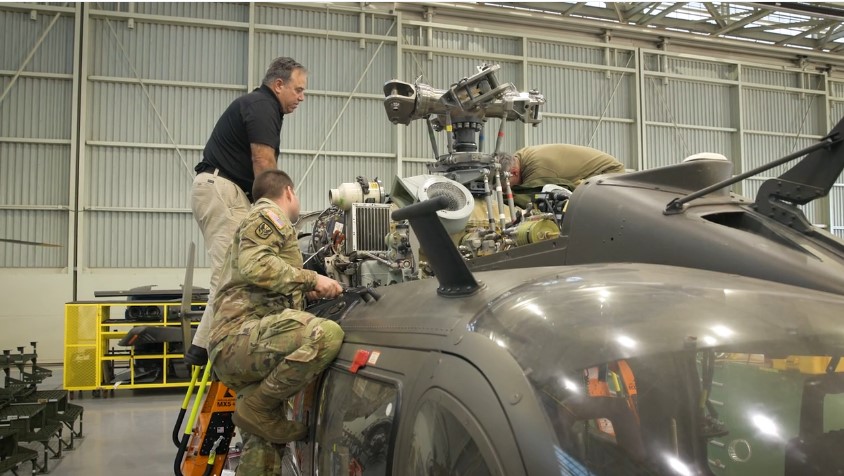
Scott Stiegler, Airbus technical support manager for Lakota and military programs, works with members of the National Guard at the Louisiana Army National Guard Field Maintenance Shop in Hammond, LA. Photo Courtesy of Airbus.
Breaking Defense: How have maintenance and logistics lessons learned on the UH-72A and in the commercial sector translated to the new Bravo model?
Dupuy: The UH-72B benefits from numerous product and reliability improvements developed during the lifecycle of the commercial Airbus EC145 helicopter, representing decades of learning.
The simple Airbus view of this is that if you want to remain competitive, then you must improve. That’s the UH-72A and the UH-72B, a best-of-breed aircraft that was derived from continuous improvement. In the end, the US Army is the benefactor of our improvement plan.
We didn’t charge the Army for the improvement from the Alpha model to the Bravo model. It was handed to the Army with no charge in development costs because we developed it for commercial competitiveness.
Those improvements include a new bearingless, five-bladed rotor and rotor head that increases the aircraft’s load capacity while reducing the number of components and the maintenance burden. A Fenestron shrouded tail rotor includes a newly designed gearbox and the removal of one transmission from the tail rotor system that reduces maintenance and enhances safety for ground operations. One less transmission equates to fewer components, and less cost and complexity. Other improvements improve aircraft performance and improve sustainability while reducing cost. Together, these improvements offer significant capability and growth opportunities to the Army.
We delivered all of this on a short timeline at no developmental cost to the Army. I’d argue that our commercial experience and the approach we take there to win commercial business have saved the Army in the billions over the life cycle.
Arrington: That last point, in my opinion, is an important one. Lessons learned from the aircraft already developed in the commercial world address a lot of the unscheduled maintenance issues you see on the military side. Scheduled maintenance is easy and predictable. Unscheduled maintenance is not. It’s complicated and unpredictable.
When you fly more, unscheduled maintenance exponentially increases. It is the driver that limits you, and we looked to take those out of the UH-72B, just as we’ve done over the years going back to the twin-engine BK117 and BO105 helicopters, the Lakota’s predecessors. Again, decades of lessons learned. Efficiency, effectiveness, reduced cost, end gain results, readiness – that’s what is important.
What brings value? What keeps us on top? The commercial side traditionally doesn’t deal with maintaining old, they want new. How is it improved? The UH-72B, a much more capable and affordable airframe, was delivered to the Army. With price escalation included, it was basically offered at the same price as the Alpha model. The burden was not passed to the Army. In the end, that’s the value we bring to the Army.
